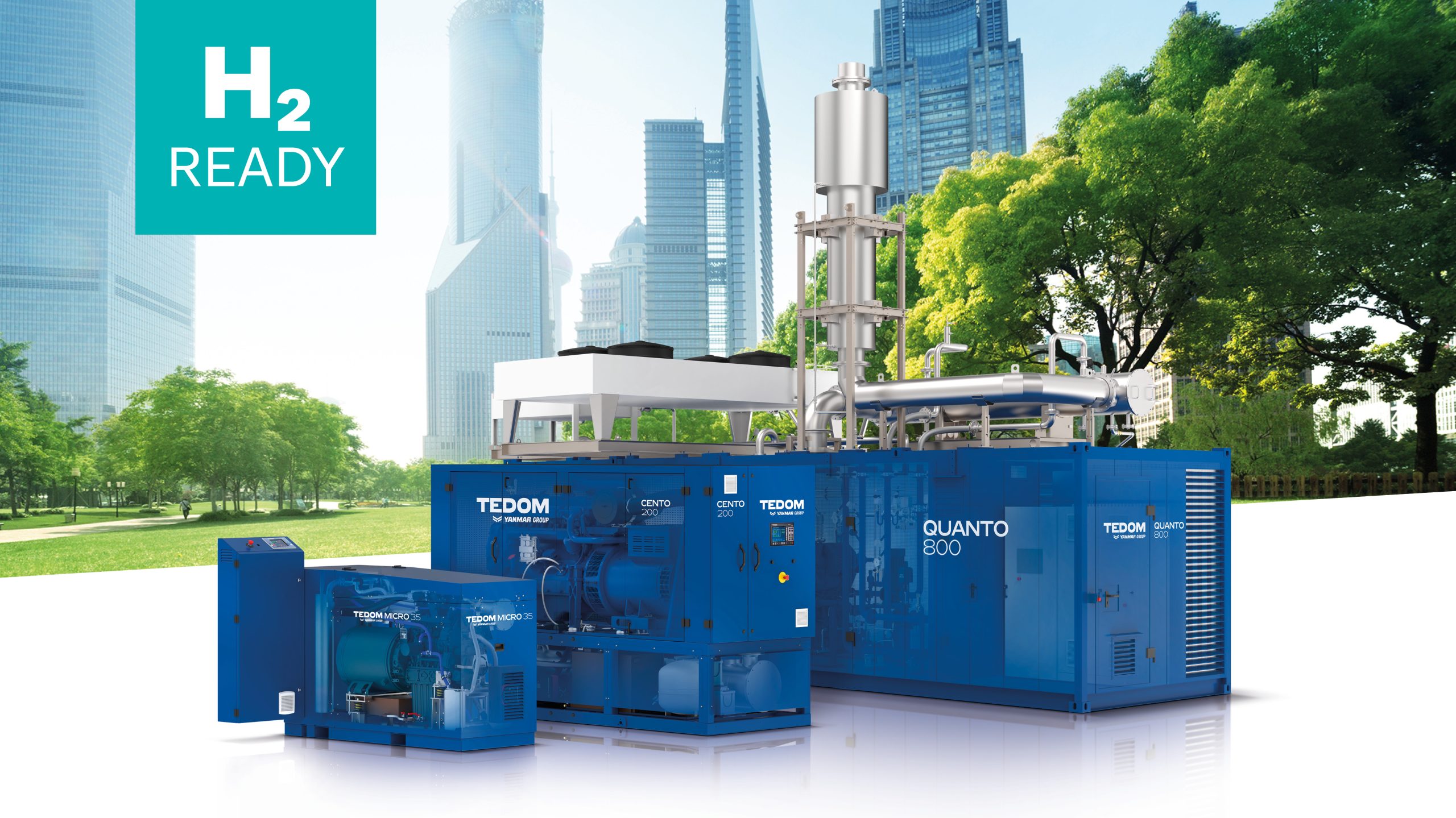TEDOM CHP units are ready for hydrogen

The majority of TEDOM CHP units is ready for co-firing a mixture of hydrogen and natural gas up to the maximum hydrogen concentration of 20%. This makes it possible to reduce CO2 emissions when generating electric power from natural gas.
TEDOM natural gas-fired CHP units are gradually being tested and a fuel change to a hydrogen mixture is possible without the need for major design modifications. There are no significant changes to the CHP unit’s technical parameters when changing its fuel. All future project will always be based on a specific project, where we will assess the feasibility individually.
We are in constant contact with leading engine manufacturers who already have experience with the burning of hydrogen and natural gas mixtures. Our development department is also intensively working on this issue

Hydrogen cogeneration
The power engineering and factory heating industries are based on fossil fuel combustion. However, this combustion process significantly contributes to global warming. A major step towards power engineering decarbonization is therefore the utilization of renewable energy resources. However, their operation can be unstable in that power is overproduced in times of intensive solar radiation or high winds. The solution is battery storage or “power to gas” technology, which uses the excess electric power to produce so-called “green hydrogen”. Green hydrogen can then be used to generate power during periods of shortages. Thus, hydrogen serves as a storage medium.
Types of hydrogen
Hydrogen is considered the fuel of the future – it is available in almost unlimited quantities, it has a high energy density, and it produces no emissions when burned. In addition, it is expected to expand gradually in the power engineering sector as it also has strong political support. However, hydrogen does not naturally occur as a highly reactive element, so it must be obtained using targeted processes.
 BROWN / BLACK
BROWN / BLACK
Is produced by the gasification of brown or black coal; however, a large amount of CO2 is released during its production.
 GREY
GREY
Is produced from natural gas and its production also releases large amounts of CO2. This is the most widely used production model.
 BLUE
BLUE
Is produced in the same way as grey hydrogen, but there is no release of CO2 into the atmosphere as it is captured during production.
 GREEN
GREEN
Is created by the water electrolysis process and its production uses only energy from renewable resources making it the most environmentally friendly hydrogen.




